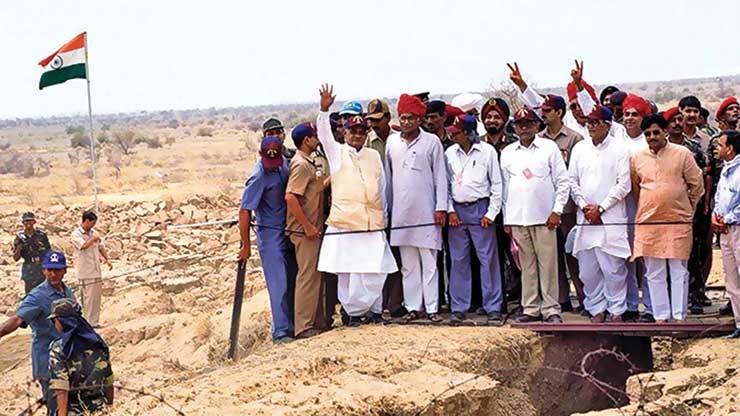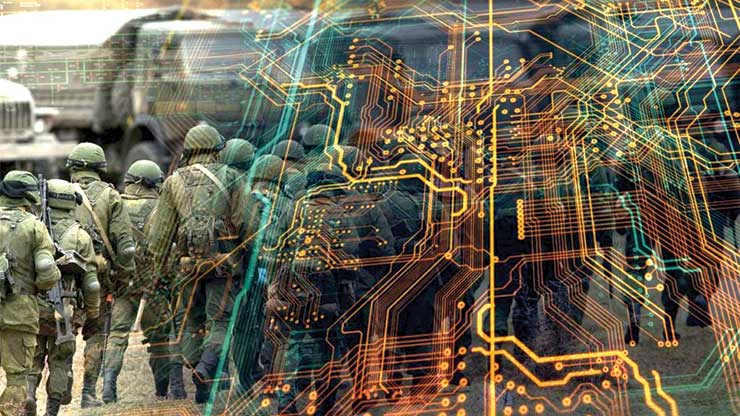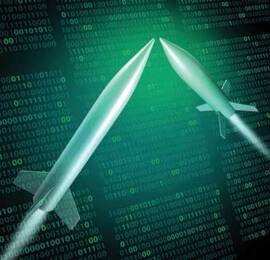
New Delhi. War has been the most effective instrument of national power for furthering national interests. When we talk about future wars, we must realise that there is a profound distinction between the wars of the past, present and future. Though greatly prepared with the revolution in military affairs, most of the armies may face future wars as unprepared. If we assume that war will remain a complex and minimally predictable event, the structures and tactics we employ will enjoy greater success.
Revolution in military affairs in the last few decades dictates that the spectrum of war needs to be reassessed so that the devastation caused by war can be correctly visualised by decision-makers, before taking the hard decision.
RELEVANCE OF WAR
Looking back to the origins of human warfare, it’s clear that conflict was deeply related to protection of home or family, and subsequently for tribes or nation state dominance. After the Second World War, the national boundaries have almost been firmed in and there are very few disputed borders in the world with exceptions like India having unresolved borders with Pakistan and China. Using force to alter frontiers is an outdated concept in the 21st century. Some analysts even suggest that the concept of war itself is obsolete. In my view, though war is not obsolete, there is certainly a paradigm shift in the nature and spectrum of war. However, the relevance of military might as a “Force of Deterrence” will never be obsolete.
PARADIGM SHIFT IN WARFIGHTING
The opening decades of this century have revealed that, in principle, war has become unattractive not only politically but also economically for the developed countries. Let’s take a look at the nature of future conflicts in the 21st Century. The opening salvos of future wars may not be armed attack, but a range of other hostile actions designed to weaken a state. Strategic futurists have speculated that this may take the form of cyber attacks from unidentified sources, engineered economic crisis, bio-warfare or even manmade natural disasters. Thus, it’s safe to presume that a nation may be at war without even knowing about it and also not knowing precisely who the enemy is. Contemporary wars require a much more integrated use of all elements of national power.
They may last longer than previous wars, involve more civilian casualties and entail rapid action by combatants. Some of the key factors of future conflicts are highlighted below:
HIGH-TECH WAR: The next war will be high tech and emerging technologies could prove revolutionary. Artificial Intelligence is going to alter the decision-making to a great extent. Future military commanders may be armed with “psycho-technology” to alter the beliefs, perceptions, and feelings of enemies. The coming decades are also likely to see the proliferation of robots around the world and in many walks of life. Future developments will have robots advance to the point of combat use, challenging human resources in war fighting.

UNPRECEDENTED DEATH AND DESTRUCTION: One thing is a certainty that the fire and fury in the next war will be of a very high intensity. The rapid pace of technology in war fighting will take future wars to the next level of destruction. The high intensity of future wars where lethality is delivered with high precision will result in heavy devastation The enormity of this destruction has to sink into the decision makers, aided by various models and statistics because war should be avoided at all costs. It’s easier to start a war but very difficult to then control and end it.
MULTIDIMENSIONAL INTEGRATED WAR: The nature of modern and future wars makes it imperative to fight in an integrated manner. The future armed conflicts will be raging in a battlefield ranging from sea to aerospace. The Navy and Air Force will, therefore, be vital components of the next multidimensional war. Modern warfare necessitates waging battles in an integrated manner with structures created to support such a strategy. True jointmanship would lead to synergised military effectiveness and maximisation of combat power. An enhanced level of jointness amongst the three services is a prerequisite for the future. Jointmanship is characterised by trust and confidence, mutual respect for each other’s capability and cooperation, leading to a win-win situation.
HYBRID WAR: Hybrid Warfare is a military strategy that blends conventional, irregular and cyber warfare. Hybrid warfare can be used to describe the flexible and complex dynamics of the battle space. In the last few decades, the destructive power of strong conventional and nuclear capabilities has resulted in weaker states and non-state groups adopting sub-conventional warfare to achieve their political objectives. Conventional conflict is increasingly intertwined with sub-conventional conflict. The hybrid threat construct is a sophisticated amalgamation of unrestricted threat activities that have resisted the laid down rules of war-fighting.
CYBER WARFARE: Future war may see attacks via computer viruses, worms, logic bombs, and Trojan horses rather than bullets, bombs, and missiles. Information technology might provide a politically usable method to damage an enemy’s national or commercial infrastructure, to attain victory without having to defeat military forces. Cyber attacks might erode the traditional advantage large and rich states hold in armed conflict. Private entities might be able to match state armed forces.
FIRE AND MANOEUVRE: In a short-duration, intense, high-tempo war, the ability to fight the contact, depth and deep battle simultaneously will shape the battlefield in a non-linear manner to facilitate manoeuvre and ultimate defeat of the enemy. Fire and manoeuvre will dominate all future wars at tactical levels. Similarly, lethal weapon loads delivering TNT at targets with micro-precision will shape the battlefield to make the victory smoother for forces to win the contact battle. The precision weapons will shape the battlefield of the 21st century by degrading the enemy’s defensive capabilities and thereby enabling extended manoeuvres. Speed will be one of the most important determinants and its need will dictate more agile mechanised forces with very high degrees of mobility and speed to facilitate multi-front, decentralised, high-tempo operations with “cascading” effects. Strategic speed to switch forces from one theatre to another will be an equally important determinant of success in future armed conflicts.

BATTLESPACE TRANSPARENCY: Electronic means of intelligence and deception started developing during the mid-20th century. The emergence of hi-tech military technology gives us the ability to get a real-time picture of the battle-space. These advancements in ISR (intelligence, surveillance and reconnaissance) technologies are therefore making the battle-space more transparent. There would be instances of ISR resources of one service providing information for execution by the weapon platforms of the other, thus predicating the need for evolution of seamless joint systems. We are also in the process of inducting UAVs (unmanned aerial vehicles) and using satellites for military communication, surveillance and navigation.
UNDECLARED BIO OR CHEMICAL WARFARE: The global spread of the COVID-19 pandemic foreshadows an even darker future, one for which we need to prepare. Although it appears that COVID-19 is a natural pandemic and not a man-made virus, that may not be the case in future. Rogue states like Pakistan and North Korea along with non-state terrorist organisations are already picking up the idea. Future developments in genomics promise sophisticated biological weapons like the advent of gene-editing techniques could allow states to develop pathogens that are more lethal, targeted in their effects and difficult to detect and treat. The experience of the current pandemic can give us an insight into future biological and chemical warfare challenges.

NUCLEAR BACKDROP: With the proliferation of nuclear capability, and the remote yet attendant danger of its catastrophic use, there are differing perceptions on whether there is any space for conventional conflict between nuclear powers. Since the May 1998 Pokhran-II nuclear tests, India and Pakistan have been through a limited war, making clear that the nuclearisation of both countries has not made conventional war an obsolete concept. Notwithstanding the nuclear deterrence in place, there is adequate strategic space for India to respond to a Pakistani misadventure, which might arise out of its miscalculated and misplaced perceptions. Nuclear capability may limit the objective, scope and intensity of the war, but the nuclear threshold would not be as fragile and low as made out. Of course, nuclear sabre-rattling by irresponsible states like North Korea and Pakistan will continue.
LIVE MEDIA COVERAGE: Future conflicts will be covered live by the media and dished out to us on a platter in the comfort zone of our drawing rooms. With the advancement of technology, the media coverage of war will beat any fiction thriller or action film. The war will be streamed live like a cricket match. Every citizen will become a master strategist and tactician passing verdict over the military leadership’s decisions. It can also be harnessed as a tool for psychological warfare. On the positive side, the live coverage will help the public to see the horrors of war and its devastation. This may lead to outrage from peace-loving global citizens to end the war, at the earliest.

CONCLUSION
It is almost certain that the next war in the 21st century will be intense, may be short, having global spread and high in destruction. It may start without any notice with various subversive methods and the nation not even aware of the adversary. The political decision makers and strategic-military mandarins of the world will have to relearn the art of weaving force into statecraft as a force of deterrence and coercion. Even after the carnage of World War I and II, and the rising number of casualties in wars, the nation states do not budget the value of human lives that will be lost. It’s easy to start a war but difficult to control it. Therefore, it is always better to avoid use of force because whoever wins, humanity and development will be the first casualty.
– The author is a scholar-soldier (Retd), an avid reader and prolific writer. He is also a social activist, career consultant and a motivational Speaker of repute. The views expressed by the writer are personal.








